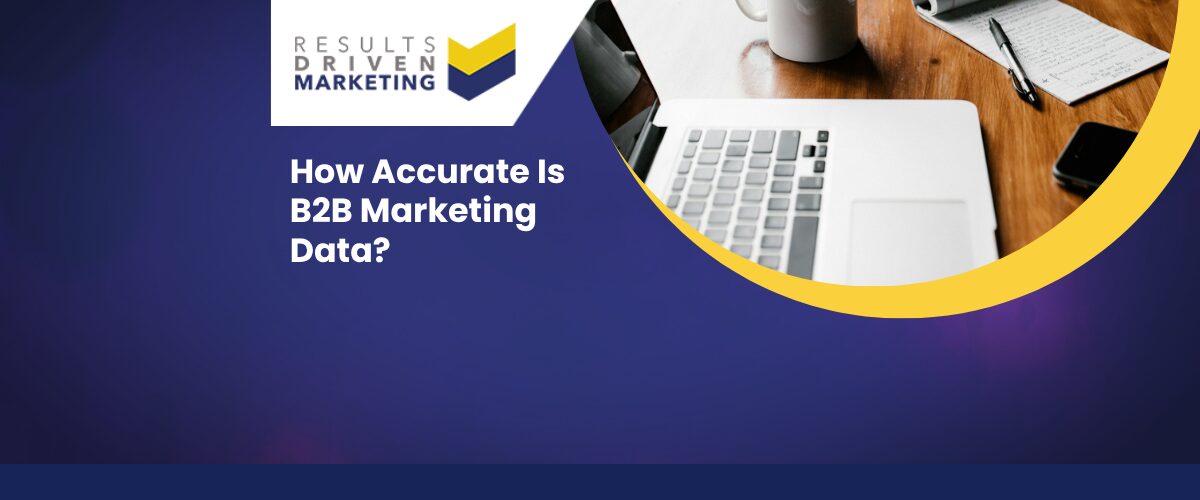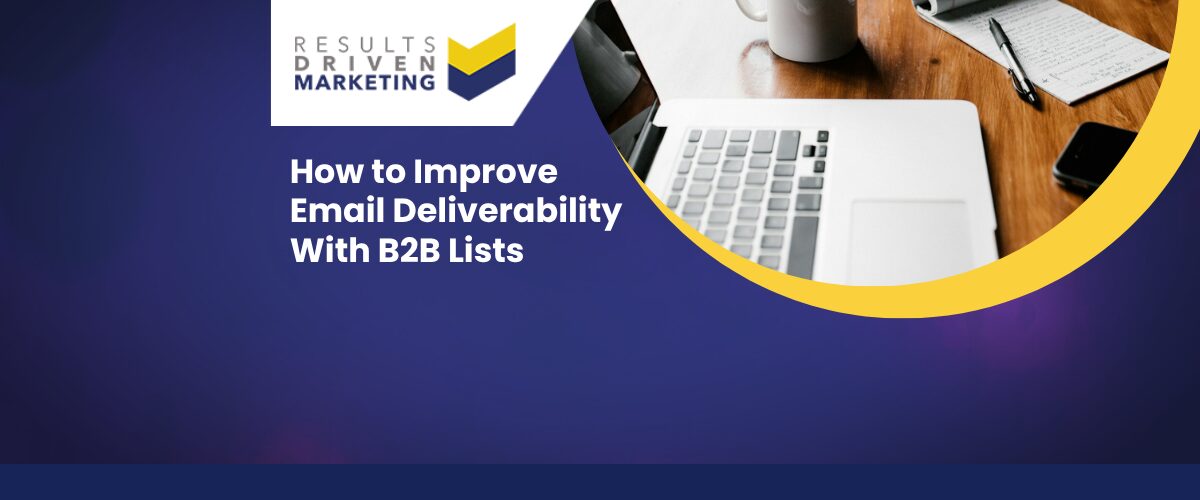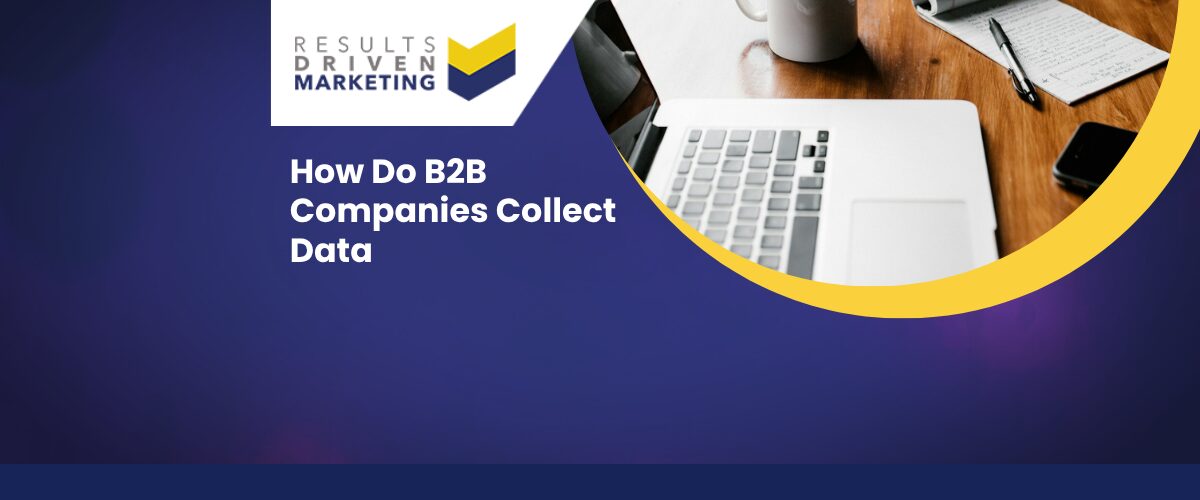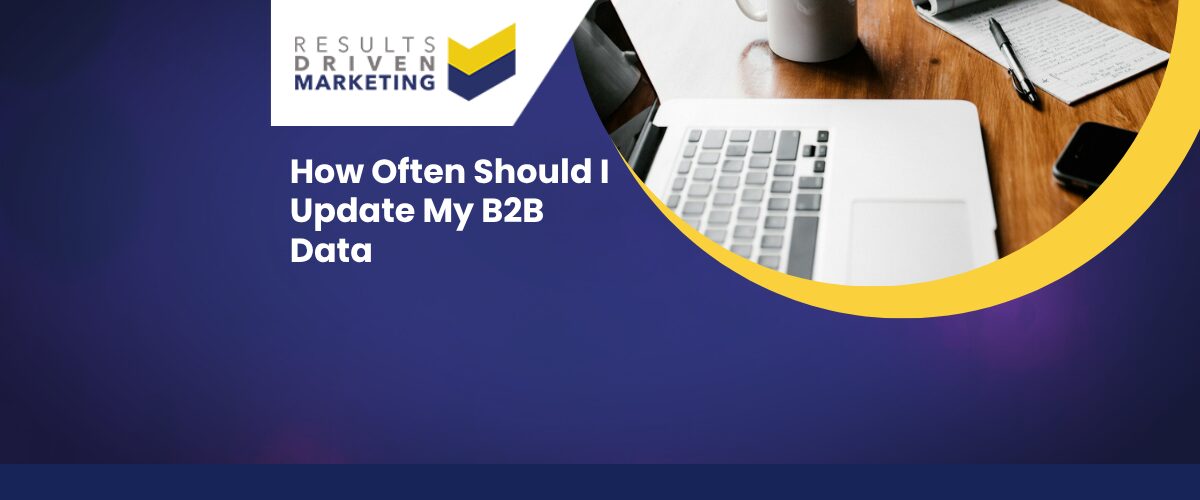
How Accurate Is B2B Marketing Data
How accurate is B2B marketing data? For UK SMEs investing in outreach campaigns, it’s a question that can make or break results.
If you’ve ever bought a list only to find job titles don’t match, emails bounce, or numbers are out of date, you’re not alone. Inaccurate data leads to wasted time, lower engagement, and missed opportunities — not to mention potential GDPR headaches.
But here’s the thing: no B2B data is perfect. The key is knowing what level of accuracy is realistic, how it’s measured, and what providers should be doing to keep data fresh and relevant.
In this post, we’ll break down what “accuracy” really means in B2B data, how it affects your lead generation success, and how to avoid the most common pitfalls. Whether you’re buying for email, telemarketing, or direct mail, this guide will help you make smarter, more confident decisions.
Table of contents:
What Does “Accuracy” Really Mean in B2B Data?
How accurate is B2B marketing data? To answer that, we first need to define what accuracy actually means in a business context.
In simple terms, accurate data reflects the current, real-world status of a contact or business. That means:
-
Correct contact names and job titles
-
Up-to-date email addresses and phone numbers
-
Valid company details, including size, industry, and location
There’s a big difference between data that’s simply incomplete and data that’s completely wrong. For example:
-
An incomplete record might be missing a job title but still have a valid email
-
An inaccurate record might list a contact who left the company 18 months ago
Accuracy also differs by channel. Postal addresses tend to be more stable. Emails and phone numbers? They change more often and require constant updating to stay reliable.
Why Data Accuracy Matters to Lead Generation
Accurate B2B data isn’t just a nice-to-have — it’s essential to running cost-effective, results-driven campaigns.
Higher Deliverability and Engagement
-
Accurate emails reach inboxes
-
Correct phone numbers connect you with real people
-
Up-to-date records mean your message lands with the right decision-makers
Less Time Wasted on Dead Ends
-
Every bounced email or wrong number slows your team down
-
Salespeople lose confidence when calls hit a wall
-
Your resources get drained chasing leads that were never valid
Better ROI on Campaign Spend
Whether you’re investing in cold emails, telemarketing, or direct mail — your results depend on accurate targeting. Poor data equals poor performance.
Reputation and Compliance
-
Contacting the wrong person can damage trust
-
Repeated failures can harm your brand’s credibility
-
Out-of-date records increase your risk under GDPR and CTPS
How B2B Data Accuracy Is Measured
So, how accurate is B2B marketing data, really? It depends on how well it’s maintained — and how that accuracy is measured.
Industry Benchmarks to Know
Most reputable UK providers aim for:
-
95%+ accuracy for email and phone data
-
98%+ accuracy for postal addresses
Some margin of error is normal — job changes, company closures, and domain updates happen daily. But large gaps in accuracy suggest poor maintenance.
Regular Updates Are Crucial
If a provider isn’t refreshing their database regularly (monthly or on a rolling basis), things go stale fast. Ask how often they update — and how deep those updates go.
Quality Control Processes
Reliable providers invest in:
-
Multi-point data checks (40+ fields is common)
-
Cross-referencing with multiple data sources
-
Ongoing validation of phone numbers and domains
They should be able to explain these processes clearly — without jargon.
Factors That Influence Data Accuracy
Not all data is created equal. Here are the main factors that determine how reliable a B2B marketing list really is:
1. Source Quality and Aggregation
-
Data from reputable, UK-based sources is more reliable
-
Cheap lists often come from scraped or resold databases
-
Good providers aggregate and clean data from multiple trusted sources
2. Frequency of Updates
-
B2B data changes quickly
-
Monthly or rolling updates keep lists fresh
-
Static lists age fast and lose value
3. Human vs Automated Validation
-
Automation helps with scale, but humans add context
-
Manual checks catch job changes, company moves, and anomalies
-
The best providers use both for a balanced approach
How to Spot Low-Quality or Inaccurate Data Before You Buy
No one advertises poor data — but the signs are there if you know what to look for.
Vague Targeting or Overpromising
-
If they can’t explain how they’ll match your brief, walk away
-
Be wary of inflated record counts or “100% accuracy” claims
Lack of Transparency on Sources and Updates
-
If they won’t say where the data comes from or how often it’s updated, that’s a red flag
-
Always ask about GDPR and CTPS alignment
No Opportunity to Speak to a Human
-
A good provider should offer advice — not just a quote and invoice
-
If support is hard to reach before purchase, it’ll be worse after
Pushy Sales Tactics
-
Genuine providers don’t rely on pressure sales
-
If it feels rushed or too good to be true, it probably is
What Accuracy Levels Should You Expect?
Here’s what to expect from well-maintained B2B data:
Channel-by-Channel Benchmarks
-
Email: 95%+ deliverability
-
Phone: 95%+ valid connections
-
Postal: 98%+ accuracy
Expect Some Margin of Error
Data changes daily. No provider can offer perfect accuracy — but they should:
-
Be upfront about what they can deliver
-
Offer replacements if issues occur
-
Clearly explain how errors are managed
Why Choose Results Driven Marketing
At Results Driven Marketing, we take data accuracy seriously — because your results depend on it.
Proven Accuracy Standards
-
40-point data quality check
-
700,000+ updates every month
-
95%+ accuracy on phone and email data
-
98% accuracy on UK postal addresses
Fully GDPR and CTPS Compliant
-
All data sourced and delivered in line with GDPR
-
Every phone number checked against CTPS
Tailored to Your Campaigns
-
Built to your brief — not a one-size-fits-all list
-
Filter by sector, job title, size, turnover, and location
-
Guidance on the best way to reach your ideal customers
Fast Turnaround and Real Support
-
Delivery within 24 hours
-
Password-protected Excel/CSV files
-
Speak to real people — no scripts, no fluff
We’re not here to sell you a list. We’re here to help you generate better leads and close more deals — with data that actually works.
Want Data You Can Rely On? Let’s Talk
If you’re tired of bad data wasting your time and hurting your campaigns, we’re ready to help.
-
Want advice? Contact us for a no-pressure chat and custom quote
-
Looking for email contacts? Our email lists are built to perform
-
Ready to start? We’ll deliver your tailored list within 24 hours
Because when you’ve got the right data, everything else gets easier.
Results Driven Marketing
B2B Data Lists | GDPR & CTPS Compliant | Delivered Fast
📍 Newcastle, UK | 📞 0191 406 6399 | 🌐 rdmarketing.co.uk




